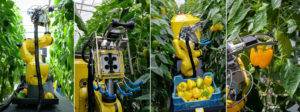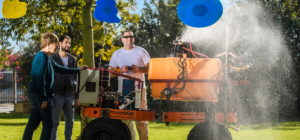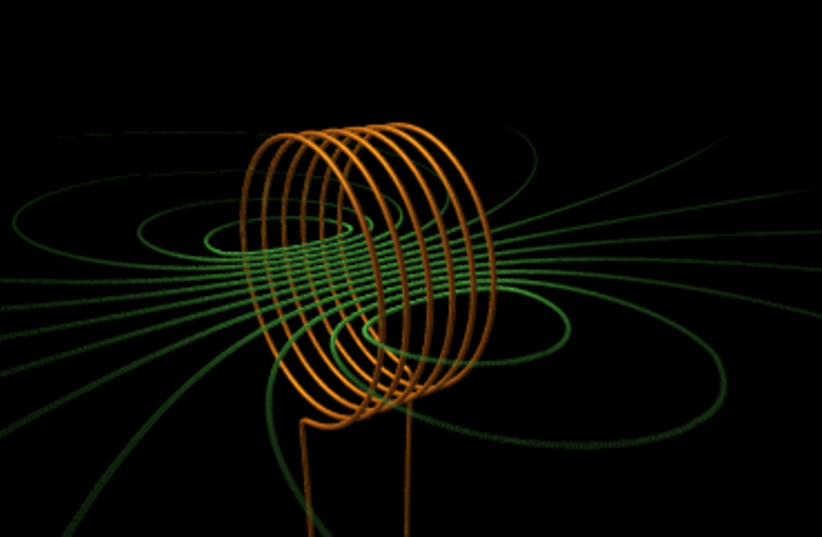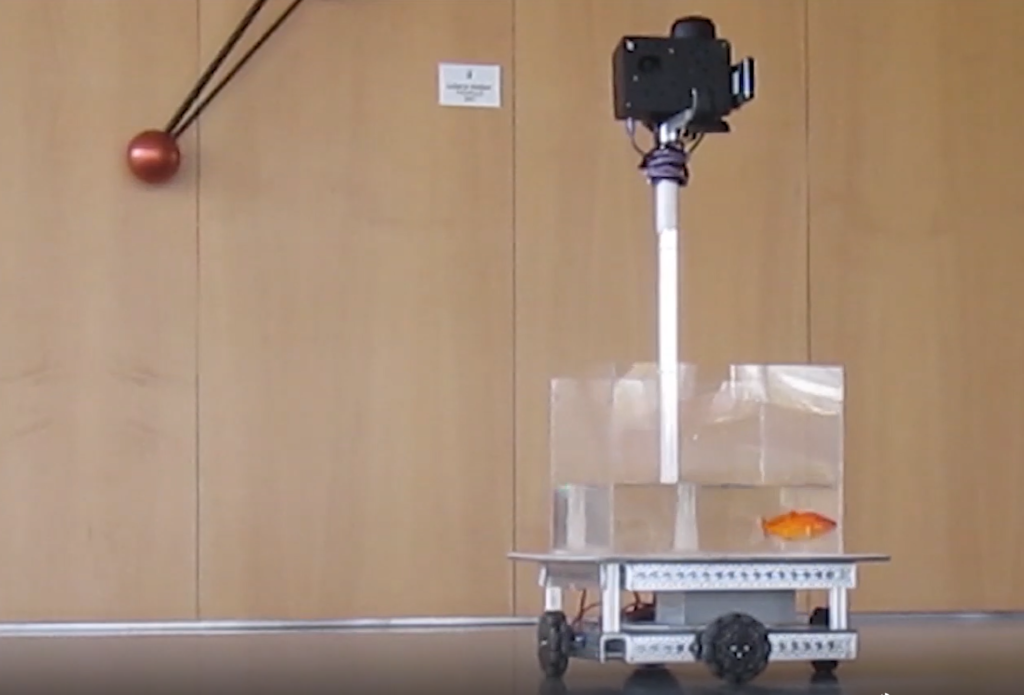
Agribots Are Pushing Farming Into the Future
Agribots Are Pushing Farming Into the Future
July 25, 2018
By Lina Zeldovich, an Americans for Ben-Gurion University Fromson Fellow from the 2018 Murray Fromson Journalism Fellowship.
 A shiny, metallic one-armed robot wheels along the rows of red pepper plants, its video camera bobbing up and down to spot the ripened fruit. When it zeros-in on one, the arm, equipped with a gripper, distantly resembling a human hand, stretches out and grasps the pepper, while a quick swish of a knife cuts it off the vine.
A shiny, metallic one-armed robot wheels along the rows of red pepper plants, its video camera bobbing up and down to spot the ripened fruit. When it zeros-in on one, the arm, equipped with a gripper, distantly resembling a human hand, stretches out and grasps the pepper, while a quick swish of a knife cuts it off the vine.
This pepper-picker is a new breakthrough in modern engineering: a sophisticated artificial intelligence-equipped machine, built by Ben-Gurion University roboticists, that may one day pick fruit and veggies for your meals— a task way more difficult and important than it appears.
“In Europe, Israel and elsewhere, finding agricultural workers is getting harder,” explains Prof. Yael Edan, head of BGU’s ABC Robotics Initiative.
“It’s a hard job, done under harsh conditions, high temperatures and humidity, whether in the fields or in greenhouses,” she continues. “Plus, it’s seasonal and only serves as temporary employment, so nobody wants to do it.”
Fruit tends to ripen all at once, while humans can only work so many hours a day, which is why a good chunk of every harvest simply falls off the trees and rots, releasing the infamous greenhouse gasses instead of gracing our tables.
This is why experts, like Prof. Edan, are turning to robotics, AI, machine learning, and other emerging technologies as a way to combat the demands of farming in the future. High-tech tools are being tested on everything from simple harvesting tasks to sophisticated wine production and pollination. While there will always be a need for human laborers — at least, in the near future — technology could help fill the voids where farmers cannot.
Machines can work around the clock, including at night with sufficient lighting. They can be adjusted to tolerate heat and humidity without overheating or taking breaks. As a result, more produce would be harvested at their peak and actually end up on our plates. The more efficient and economical process could potentially help balance the ever-increasing food prices too.
As part of the European Union’s SWEEPER collaboration with Dutch, Swedish and Belgian researchers, Prof. Edan’s team is now testing the pepper-picking robot in some greenhouses in the Netherlands.
“It took hundreds of thousands of pepper pictures—huge databases of pictures to get the machine-learning algorithm to recognize the peppers properly,” says Polina Kurtser, BGU Ph.D. student in computer vision and robotics. “But now, the computer can handle that.” Kurtser is part of Prof. Edan’s team that is testing different harvesting strategies—cutting fruit off versus sucking it in with a vacuum, as well as other methods.
BGU researchers are working on other agribots, such as drones that can pollinate flowers instead of bees, and smart sprayers that can calculate exactly how much pesticide should be spewed onto grapevines to prevent disease. Both projects could impact the future of food safety and security.
As more crops move from fields into greenhouses, whether because of climate change or other reasons, pollinating can be a challenge. Plus, in the past decade, bee populations around the world have been declining because of the infamous colony collapse disorder, which poses a real threat to food supply.
Dr. Shai Arogeti, head of BGU’s Control Systems Laboratory and head of the master’s program in mechatronics engineering in the Department of Mechanical Engineering, is collaborating with Prof. Edan to create a pollinator drone.
Still in its early stages of development, the drone neither lands on flowers nor looks like a bee, but it can literally create enough buzz to achieve the same results.
Some plants, like tomatoes, don’t require bees to pollinate them—they can pollinate each other through the wind. Given this information, Dr. Arogeti has been testing out a bot that can fly between the rows of greenhouse plants, creating a gentle breeze with its spinning blades and blowing plants’ pollen around. To prevent the bot from mowing down the plants, it is tethered to a base and can only fly straight through the aisles.
Will robot farmers cause massive loss of jobs in agriculture? Scientists don’t think so.
“We don’t expect these robots to completely replace humans in the fields,” Prof. Edan says. “We expect them to help with tasks humans can’t and don’t want to do, enabling us to grow the best produce possible.”
Sometime in the next decade your perfect-looking strawberry pack may indeed say robot-picked. Or even, robot-pollinated and sprayed.






